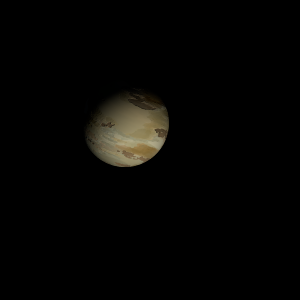|
|
Space Astro
|
Info for exoplanet "Edenesi Hyg"
| Scientific (actual) data |
|---|
| Name | Wolf 1061 c |
| Planet status | Confirmed |
| Mass sini | 0.0107 |
| Orbital period | 17.8719 |
| Semi major axis | 0.089 |
| Orbit eccentricity | 0.11 |
| Discovered | 2015 |
| Updated | 2017-06-30 |
| Omega | 37 |
| K | 1.92 |
| Publication | Published in a refereed paper |
| Detection type | Radial Velocity |
| Mass measurement type | Radial Velocity |
| Alternate names | GJ 628 c |
| Star name | Wolf 1061 |
| Right ascension | 247.58° |
| Declination | -12.66° |
| Mag v | 10.07 |
| Mag k | 5.075 |
| Star distance | 4.29 |
| Star metallicity | -0.09 |
| Star mass | 0.25 |
| Star radius | 0.307 |
| Star sp type | M3V |
| Star temperature | 3342 |
| Star alternate names | GJ 628 |
| Wikipedia article | Wolf 1061 c |
Back
| |
| Fictional info (?) |
|---|
| Suggested name | Edenesi Hyg |
| Planet type | Planet |
| As seen relative to the fixed stars, it rotates on its axis exactly three times for every two revolutions it makes around Wolf 1061.
It was the one of the first exoplanets visited by a spacecraft, and one of the first to be successfully landed on.
A prominent result is the "great red spot", a giant storm that is known to have existed for centuries since it was first detected by scanner.
The largest moon is often dangerous because of the friendly but shy poisonous bacteria known to feed everywhere while hunting the Sekewaf Elu plant. The Evahele are not similar to the Baraqi, have fur and vary in length from 16 to 36 cm. Evahele are able to reproduce at temperatures from -10 to 30°C but are killed by the acidic environment. |
| Estimated population | 11000000 |
| Atmosphere | Methane | 49% |
| Oxygen | 33% |
| Water | 16% |
| Carbon dioxide | 1.3% |
| Atmospheric pressure | 2.9 bar |
 |
| Moon | Enerys Inek | Large slightly egg-shaped ice planetoid |
| Google search for Edenesi hyg |
|
Website by Joachim Michaelis
|
|
|
|